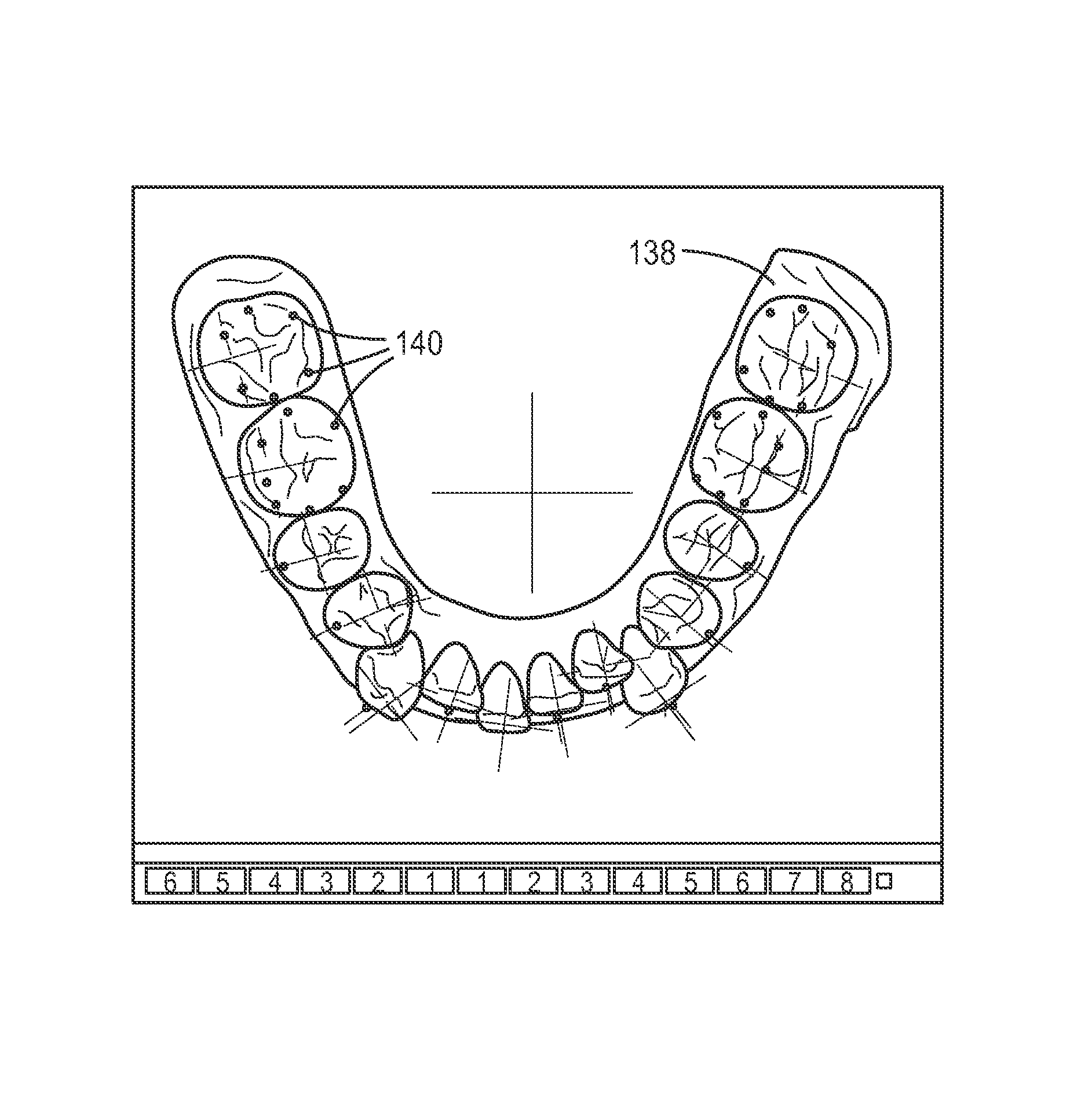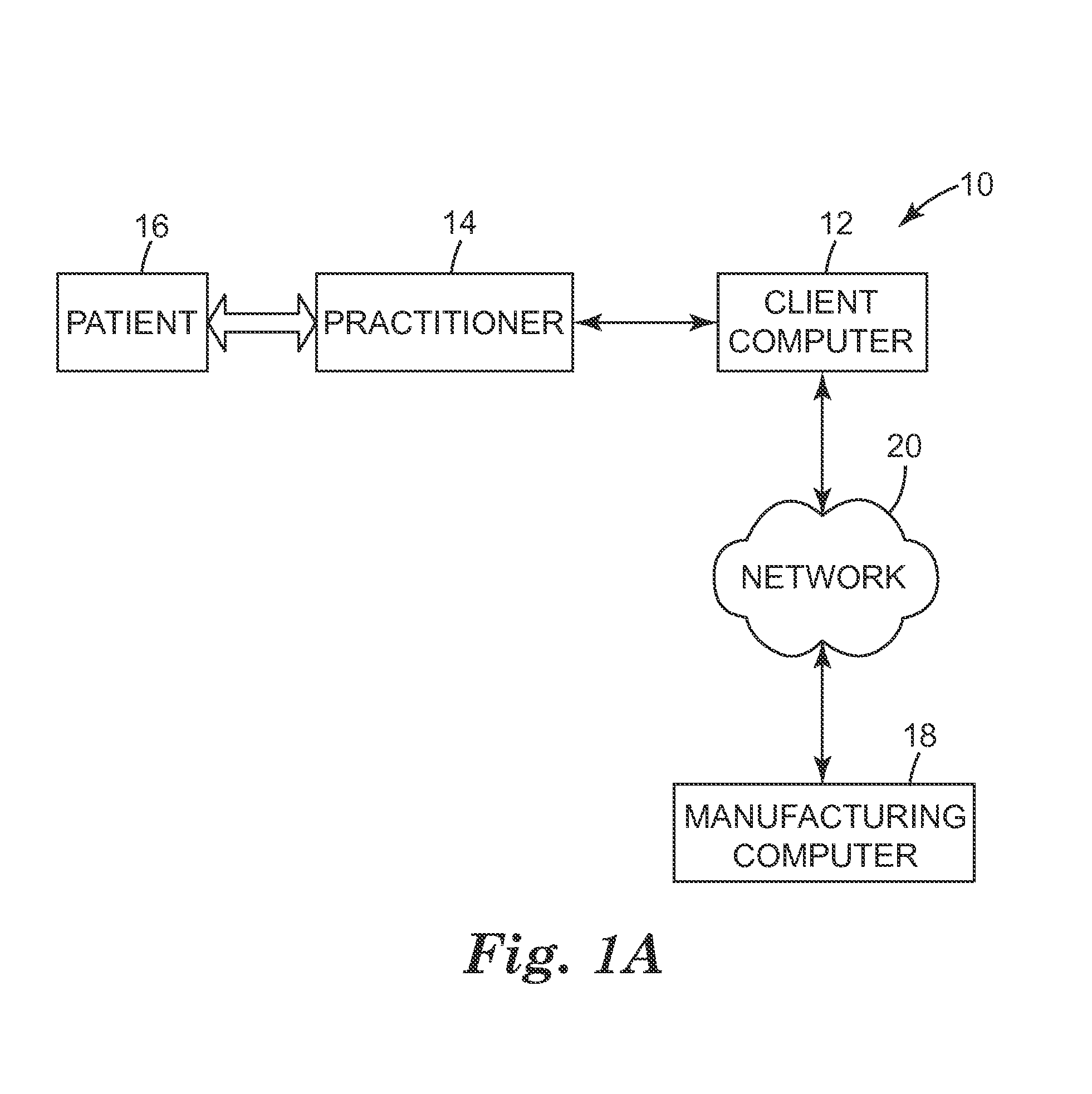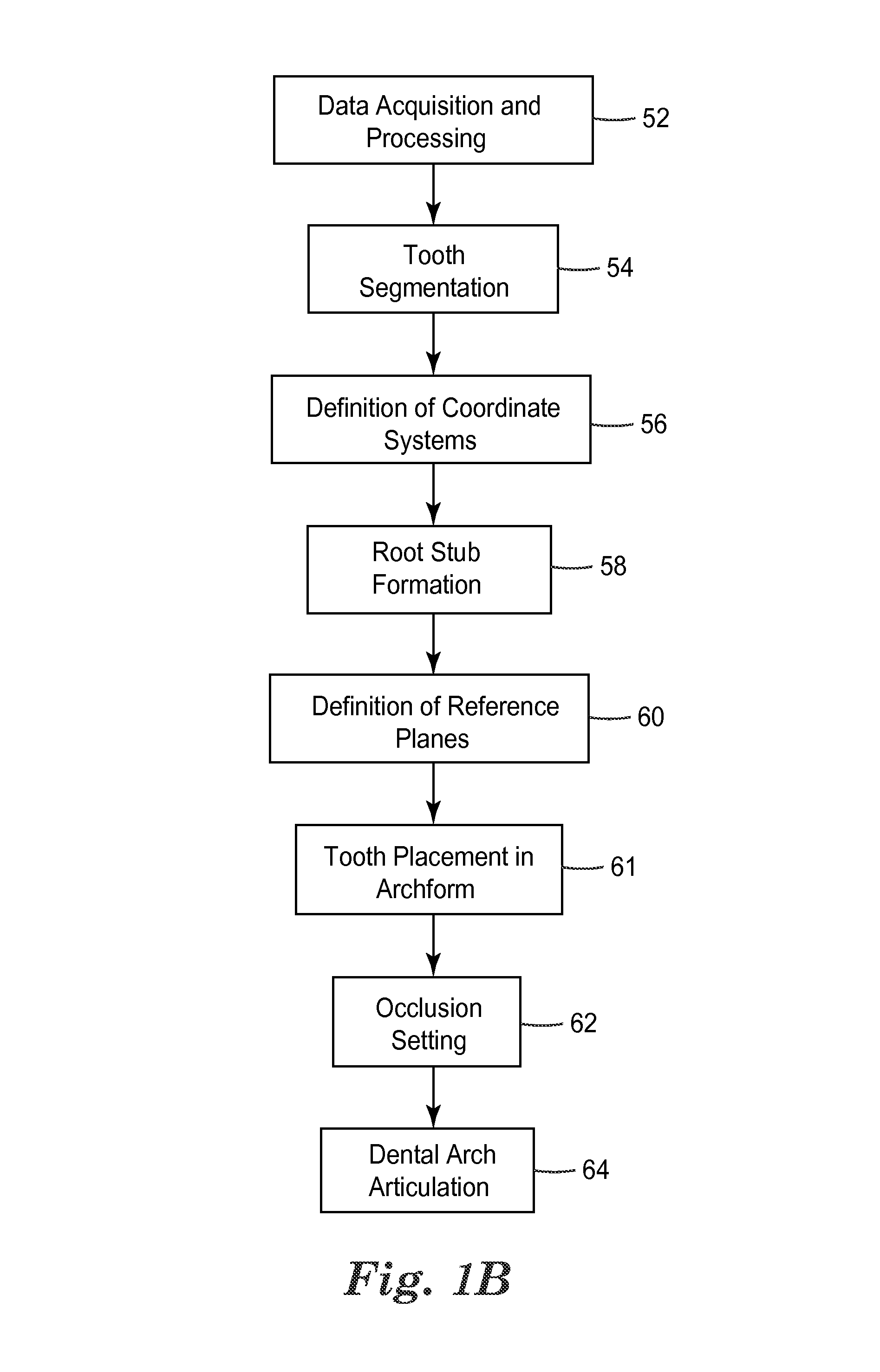Orthodontic digital setups
a digital setup and orthodontic technology, applied in the field of digitally enabled orthodontics, can solve the problems of difficult computer recognition of the boundaries that separate a given tooth from adjacent teeth, affecting the treatment effect, so as to reduce the area of mouth surface, reduce the difficulty of computer recognition of the boundaries, and improve the effect of computerized segmentation
- Summary
- Abstract
- Description
- Claims
- Application Information
AI Technical Summary
Benefits of technology
Problems solved by technology
Method used
Image
Examples
Embodiment Construction
[0063]FIG. 1A is a block diagram illustrating an exemplary computer environment 10 that includes a client computer 12. Preferably, the client computer 12 has a processor, input device, memory, and display device. The client computer 12 presents an environment for an orthodontic practitioner 14 to interact with a digital representation of a portion of or an entire dental arch of patient 16 to generate and visualize an orthodontic digital setup for patient 16. Optionally and as shown, the client computer 12 communicates with a manufacturing facility 18 via network 20.
[0064]The client computer is operated by a user. The user interacts with modeling software executing on a computer to visualize, process, and manipulate the 3D representation of a patient's dental arch, arches, or subsets thereof. The computer may be located in the manufacturing facility 18, a dental laboratory, or practitioner's office. As another possibility, the computing resources for running the software may be sprea...
PUM
 Login to View More
Login to View More Abstract
Description
Claims
Application Information
 Login to View More
Login to View More - R&D
- Intellectual Property
- Life Sciences
- Materials
- Tech Scout
- Unparalleled Data Quality
- Higher Quality Content
- 60% Fewer Hallucinations
Browse by: Latest US Patents, China's latest patents, Technical Efficacy Thesaurus, Application Domain, Technology Topic, Popular Technical Reports.
© 2025 PatSnap. All rights reserved.Legal|Privacy policy|Modern Slavery Act Transparency Statement|Sitemap|About US| Contact US: help@patsnap.com



